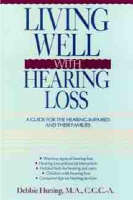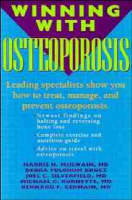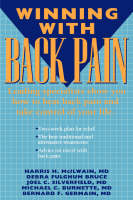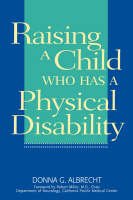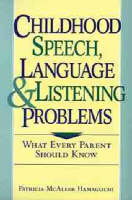Overcoming Dyslexia For Dummies
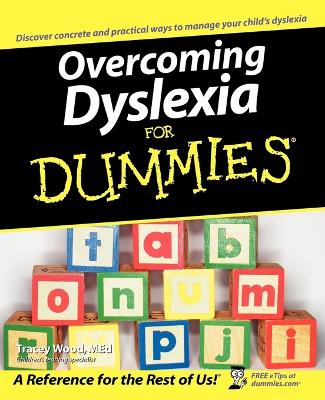 -15%
portes grátis
-15%
portes grátis
Overcoming Dyslexia For Dummies
Wood, Tracey
John Wiley & Sons Inc
12/2005
384
Mole
Inglês
9780471752851
15 a 20 dias
705
About This Book 1
Conventions Used in This Book 2
What You're Not to Read 3
Foolish Assumptions 3
How This Book Is Organized 3
Part I: Figuring Out What Dyslexia Is All About 4
Part II: Determining When to Get a Diagnosis 4
Part III: Exploring Your Options for Schools and Programs 4
Part IV: Taking Part in Your Child's Treatment 5
Part V: Moving beyond the Childhood Years 5
Part VI: The Part of Tens 5
Part VII: Appendixes 5
Icons Used in This Book 5
Where to Go from Here 6
Part I: Figuring Out What Dyslexia Is All About 7
Chapter 1: Understanding the Basics of Dyslexia 9
Defining Dyslexia in Plain Terms 10
Zeroing In on the Symptoms of Dyslexia 11
Deciding When to Have Your Child Tested 12
Exploring Different Schools and Programs for Your Child 13
Helping Your Child with Activities at Home 14
Watching Your Dyslexic Child Grow 16
Chapter 2: Pinpointing What Dyslexia Is (And Isn't) 17
Understanding the Real Meaning of "Dyslexia" 17
Looking at the straight facts 17
Moving away from common misconceptions 18
Classifying dyslexia as a "learning disability" 19
Investigating the Causes of Dyslexia 20
Weighing up brain research 20
Getting into genetics 22
Breaking Down Dyslexia into Different Types 23
Looking at Other "Dys" Conditions Related to Dyslexia 24
Dysgraphia: Difficulty with writing 24
Dyscalculia: Difficulty with math 25
Dyspraxia: Difficulty with motor skills 25
Comparing Dyslexia to ADD and ADHD 26
Examining ADD 27
Checking out ADHD 28
Chapter 3: Being Alert to Symptoms of Dyslexia at Any Age 29
Understanding Why It's Important to Look for Signs 30
Appreciating that dyslexia is unexpected 30
Being savvy about screening tests and what one teacher can do 31
Avoiding the "wait awhile" trap 32
Noticing Your Preschooler's Late Development 32
Watching Your School-Age Child Fade 33
Recognizing Signs of Dyslexia at Older Ages 35
Seeking out signs in teenagers 35
Acknowledging adult symptoms 36
Referring to Your Family's History 37
Part II: Determining When to Get a Diagnosis 39
Chapter 4: Watching Your Child Carefully at a Young Age 41
Keeping a Close Eye on Early Skills 41
Talking late and unclearly 42
Battling ear infections 43
Seeing a range of vision problems 44
Having trouble with playing and dressing 46
Displaying weak pre-reading skills 47
Engaging in Pre-Reading Activities at Home 48
Developing print awareness 48
Zeroing in on phonemic and phonics skills 48
Preparing Your Child for Kindergarten 51
Stirring up good feelings about school 51
Helping your child with language skills 52
Nurturing other academic skills 52
Encouraging fine motor skills 53
Showing your child what's sociable 54
Putting your child in charge of his personal information 54
Chapter 5: Acting Quickly with Your School-Age Child 55
Understanding Why a Quick Response to Reading Problems Is Critical 55
Noticing Dyslexic-like Behaviors at Home 57
Struggling with written words 57
Feeling unhappy 58
Being disorganized 58
Asking Your Child's Teacher to Look for Dyslexic-like Behaviors in Class 59
Laboring with reading 60
Writing with difficulty 61
Making predictable spelling errors 62
Coping with other classroom tasks and issues 63
Behaving unusually 63
Chapter 6: Testing Your Child for Dyslexia 65
Deciding When to Get a Diagnosis 66
Examining Different Kinds of Tests 67
Looking at language tests for preschoolers 67
Making sense of vision and hearing tests 68
Surveying early screening tests 69
Understanding IQ tests 70
Picking out performance tests 71
Charging up for a test battery 73
Choosing Your Test Administrator Wisely 74
Selecting a specialist within your child's school district 74
Investigating independent testers outside your child's school district 75
Preparing Your Child (And Yourself) for Testing 77
Receiving Test Results and Putting Them to Work 78
Breaking down terminology in test results 79
Finding out that your child has an LD 80
Discovering that your child won't be recognized as having an LD 81
Looking at Your Options When You Decide Not to Test 85
Part III: Exploring Your Options for Schools and Programs 87
Chapter 7: Choosing the Best School for Your Child 89
Questioning the Kind of School Your Child Needs 90
Looking at What a Traditional Public School Offers 92
Supplying assessment services 92
Homing in on school programs 92
Giving help above and beyond the classroom 96
Providing sensitivity to your child's needs 97
Meeting the Staff in a Traditional Public School 99
Familiarizing yourself with the classroom teacher 99
Acquainting yourself with the resource teacher 101
Checking out school specialists 102
Paying special attention to the support staff 103
Taking note of the principal 103
Getting the Scoop on Alternative Schooling 104
Finding out about charter schools 104
Feeling the pull of magnet schools 105
Choosing a private school 105
Examining Montessori schools 106
Walking the Waldorf (or Steiner) path 106
Deciding on a school for dyslexics 107
Thinking about home schooling 108
Chapter 8: Investigating the Individualized Education Program 113
Probing into the Basics of an IEP 113
The nuts and bolts of an IEP meeting 114
The fine print of an IEP document 115
Ensuring a Successful IEP Meeting 117
Preparing yourself 117
Making the meeting work for you 119
Surveying the Services That Your Child Receives with an IEP 120
Looking at the Legal Nitty-Gritty of IEPs 121
Examining the acts governing IEPs 121
Knowing your rights - and your child's 123
Chapter 9: Securing Help without an Individualized Education Program 125
Making the Most of Choices in School 125
Looking for Help Outside School 126
Scoping out specialized dyslexia therapies 126
Considering dyslexia clinics 127
Paying an individual tutor 128
Opting for a general learning center 130
Giving Academic Support at Home 134
Letting your child take the lead with homework 134
Setting up homework management methods 135
Using technology 137
Steering clear of a math meltdown 141
Chapter 10: Working Productively with Your Child's Teacher 143
Requesting and Preparing for a Conference 144
Asking the teacher to meet 144
Assembling important info 145
Determining whether to bring your child 145
Keeping a Conference on Track and Following Up Smartly 146
Creating a positive mood 146
Emphasizing your child's needs 147
Pushing your points firmly 148
Adhering to the teacher's goals 149
Taking action after a conference 149
Coming Up with Cool Accommodations 150
Understanding oral instructions clearly 151
Reading large amounts of text 151
Comprehending text 152
Writing large amounts of text 152
Copying from the board with ease 153
Spelling successfully 153
Finishing classroom work and homework on time 154
Avoiding Dyslexic Land Mines with a Teacher's Help 154
Being graded, tested, and (worst) retained 154
Learning in parrot fashion 158
Part IV: Taking Part in Your Child's Treatment 159
Chapter 11: Putting Memorizing, Visualizing, and Rhyming to Good Use 161
One by One: Starting with Single Letters 161
Drawing pictures into vowels 162
Knocking b and d into shape 163
Putting P in its place 165
Letters Joining Forces: Getting on Top of a Few Good Spelling Rules 165
Blatantly Bossy e 166
Extroverted and introverted vowels 168
An old favorite: "i before e except after c" 169
I Know You! Having Fun with Sight Words 171
Ten at a time 172
Picture this 173
Bang! 174
Word roll 174
Five up 175
Bingo 175
Do You See the Sea? Distinguishing between Sound-Alike Words 176
The Hard Stuff: Remembering Especially Tricky Words 178
Chapter 12: Playing with Phonics 179
Emphasizing Single Letters 179
Cozying up with consonants 180
Taking a long look at short vowels 181
Introducing letters by name 182
Building Three-Letter Words in Word Families 182
Putting together "at" 183
Moving on up with "bat," "cat," "fat," and more 183
Running through additional word families 184
Mixing It Up with Blended Consonants 184
Blends at the beginning 185
Blends at the end 185
Delving into Digraphs 187
Mastering Tricky Vowel Sounds 189
Opening up to long vowels 190
Hearing "y" sound like a vowel 190
Surveying schwa vowels 192
Singling out sound-alike chunks featuring vowels 193
Partnering vowels with "r" 196
Lopping vowels off the ends of words 197
Bringing Consonants under Control 198
Unmasking consonants in disguise 198
Sounding out the softies 199
Spotting the silent types 202
Doubling up 203
Chapter 13: Sprinting Ahead with Reading Basics and Practice 205
See Jane Read: Looking at Reading Fundamentals 205
Being quick to recognize sight words 206
Feeling good about phonics 207
Understanding about comprehension 207
In the Habit: Establishing a Happy Reading Routine 209
Page after Page: Using Special Strategies for Reading Success 211
Choosing the right books 212
Reading to your child first 215
Pairing up to read 216
Running through multiple readings 217
Nice and Gentle: Handling Your Child's Difficulties with Kindness 219
Knowing when to give a quick answer 219
Having your child figure a word out when the time is right 220
Helping your child find contextual cues 220
Chapter 14: Taking Advantage of Multisensory Methods 223
Bringing the Term "Multisensory" Down to Earth 223
Distinguishing multisensory teaching from traditional methods 224
Fitting together "multisensory" and "structured and sequential" teaching 225
Setting the Stage for Multisensory Success 226
Making Homework Multisensory 227
Setting up a happier homework environment 227
Helping your child understand new information 228
Having Practical Stuff for Playing at Your Fingertips 229
Modeling clay 229
Gummy mixtures 229
Sandpaper 230
Laminate 230
Scissors 231
Flashcards 231
Board games 233
Computer games 234
Other great tools to have on hand 234
Working Physical Activity into Your Child's Routine 235
Experimenting with Alternative Multisensory Treatments 236
Coloring pages of text 236
Reading a new font 237
Listening to different messages in each ear 237
Eating fish 238
Chapter 15: Handling Everyday Activities and Difficulties 239
Talking Your Child into Feeling Good 240
Understanding your child's feelings 240
Listening carefully 241
Empowering your child 243
Responding calmly to your child's mistakes 244
Helping Your Child with Space, Time, and Sequence 245
Spacing out 246
Timing is everything 250
Following a sequence 252
Maintaining Harmony in the Home 254
Sharing the load 254
Toeing the line 254
Strengthening bonds between siblings 255
Part V: Moving beyond the Childhood Years 257
Chapter 16: Assisting Dyslexic Teens 259
Instilling New Life Skills 259
Aiming for high self-esteem 260
Fostering more independence at home 261
Making time for rest and play 262
Getting behind the driver's wheel 262
Facing School Challenges Head-On 263
Moving toward self-reliance with schoolwork 263
Enforcing order on those files 264
Staying on top of all the reading and writing 264
Taking notes 266
Studying the right foreign language 268
Giving great speeches 270
Planning for college and jobs 270
Encouraging the Development of Work Skills 271
Keeping up with extracurricular activities 271
Doing some good with community service 272
Finding a part-time job 272
Chapter 17: Heading Off to College 275
Keeping a Well-Stocked Portfolio 275
Providing proof of dyslexia 276
Gathering academic results 277
Giving evidence of school and community involvement 281
Researching Majors and Schools 282
Deciding on potential fields of interest 282
Examining different types of colleges 282
Focusing on Target Schools 284
Touring campuses 284
Asking about disability programs 285
Handling the Application and Interview Process 285
Completing applications with ease 286
Impressing interviewers 287
Picking the Winning School 288
Finding Help with Financing 289
Successfully Keeping Up with Grades 291
Chapter 18: Succeeding with Dyslexia in Adulthood 293
Benefiting from a Late Diagnosis 293
Looking at Helpful Programs and Treatments for Adults 295
Heading to the classroom 296
Improving your reading skills at home 296
Knowing Your Workplace Rights as a Dyslexic Adult 297
Making small accommodations for big results 298
Receiving reliable advice 299
Keeping Family and Friends in the Frame 299
Part VI: The Part of Tens 301
Chapter 19: Ten Tools for Making a Dyslexic's Life Easier 303
A Pencil Grip 303
Pens with Erasable Ink 303
Colored Files and Other Handy Items 304
A Wristwatch 304
A Pocket Spell Checker 304
A Cell Phone and a Personal Organizer 305
Books on Tape (Or CD) 305
A Photocopier 305
A Word Processor and the Internet 306
Speech-to-Text Software 306
Chapter 20: Ten Well-Known Dyslexia Programs and Treatments 307
Orton-Gillingham and Other Phonics-Based Reading Programs 307
Treatments That Tune into Sounds 308
Berard Auditory Integration Training (AIT) 308
Fast ForWord Language 309
Earobics 310
Tomatis 310
Treatments That Focus on Vision 311
Davis Dyslexia Correction 311
The Irlen Method 311
Treatments That Get Physical 312
Balametrics 312
Brain Gym 312
The DORE Program 313
Lindamood-Bell Learning Processes 313
Audiblox 314
PACE 314
All Kinds of Minds 315
The Feingold Program 315
Levinson Medical Centers 316
Part VII: Appendixes 317
Appendix A: An Informal Assessment of Phonemic Awareness and Phonics Skills 319
Picking Out Pre-Reading Skills 320
Visual discrimination 320
Auditory discrimination 321
Phonemic awareness 323
Examining Early Reading Skills 324
Knowing single letters 325
Trying three-letter words with short vowels 325
Blending letters 326
Diving into digraphs 327
Testing for Independent Reading Skills 327
Looking at long and short vowels 328
Getting the hang of y endings 328
Sorting out vowel combinations 329
Spotting soft and hard letters 330
Watching out for silent letters 330
Placing vowels before r 331
Appendix B: Contacts and Resources 333
Getting General Information Online or by Voice Mail 333
Five general Web sites to start you off 333
Five big organizations 334
Talking to Someone Directly 335
Checking Your Child's Eyes, Ears, and Mouth 336
Surveying Self-Tests 336
Focusing on Alternative Schooling and School Reading Programs 337
Schools 337
School reading programs 338
Laying Down the Law 339
Finding Independent Programs, Therapists, and Learning Centers 339
Dyslexia treatments 339
Therapists and tutors 340
Dyslexia clinics 341
General learning centers 341
Trying Technology 342
Lending a Hand to Teens, College Students, and Adults 343
College entrance exams and other tests 343
College and general education information 343
Financial aid and scholarships 344
Jobs and other life skills 345
At-home dyslexia programs 345
Index 347
About This Book 1
Conventions Used in This Book 2
What You're Not to Read 3
Foolish Assumptions 3
How This Book Is Organized 3
Part I: Figuring Out What Dyslexia Is All About 4
Part II: Determining When to Get a Diagnosis 4
Part III: Exploring Your Options for Schools and Programs 4
Part IV: Taking Part in Your Child's Treatment 5
Part V: Moving beyond the Childhood Years 5
Part VI: The Part of Tens 5
Part VII: Appendixes 5
Icons Used in This Book 5
Where to Go from Here 6
Part I: Figuring Out What Dyslexia Is All About 7
Chapter 1: Understanding the Basics of Dyslexia 9
Defining Dyslexia in Plain Terms 10
Zeroing In on the Symptoms of Dyslexia 11
Deciding When to Have Your Child Tested 12
Exploring Different Schools and Programs for Your Child 13
Helping Your Child with Activities at Home 14
Watching Your Dyslexic Child Grow 16
Chapter 2: Pinpointing What Dyslexia Is (And Isn't) 17
Understanding the Real Meaning of "Dyslexia" 17
Looking at the straight facts 17
Moving away from common misconceptions 18
Classifying dyslexia as a "learning disability" 19
Investigating the Causes of Dyslexia 20
Weighing up brain research 20
Getting into genetics 22
Breaking Down Dyslexia into Different Types 23
Looking at Other "Dys" Conditions Related to Dyslexia 24
Dysgraphia: Difficulty with writing 24
Dyscalculia: Difficulty with math 25
Dyspraxia: Difficulty with motor skills 25
Comparing Dyslexia to ADD and ADHD 26
Examining ADD 27
Checking out ADHD 28
Chapter 3: Being Alert to Symptoms of Dyslexia at Any Age 29
Understanding Why It's Important to Look for Signs 30
Appreciating that dyslexia is unexpected 30
Being savvy about screening tests and what one teacher can do 31
Avoiding the "wait awhile" trap 32
Noticing Your Preschooler's Late Development 32
Watching Your School-Age Child Fade 33
Recognizing Signs of Dyslexia at Older Ages 35
Seeking out signs in teenagers 35
Acknowledging adult symptoms 36
Referring to Your Family's History 37
Part II: Determining When to Get a Diagnosis 39
Chapter 4: Watching Your Child Carefully at a Young Age 41
Keeping a Close Eye on Early Skills 41
Talking late and unclearly 42
Battling ear infections 43
Seeing a range of vision problems 44
Having trouble with playing and dressing 46
Displaying weak pre-reading skills 47
Engaging in Pre-Reading Activities at Home 48
Developing print awareness 48
Zeroing in on phonemic and phonics skills 48
Preparing Your Child for Kindergarten 51
Stirring up good feelings about school 51
Helping your child with language skills 52
Nurturing other academic skills 52
Encouraging fine motor skills 53
Showing your child what's sociable 54
Putting your child in charge of his personal information 54
Chapter 5: Acting Quickly with Your School-Age Child 55
Understanding Why a Quick Response to Reading Problems Is Critical 55
Noticing Dyslexic-like Behaviors at Home 57
Struggling with written words 57
Feeling unhappy 58
Being disorganized 58
Asking Your Child's Teacher to Look for Dyslexic-like Behaviors in Class 59
Laboring with reading 60
Writing with difficulty 61
Making predictable spelling errors 62
Coping with other classroom tasks and issues 63
Behaving unusually 63
Chapter 6: Testing Your Child for Dyslexia 65
Deciding When to Get a Diagnosis 66
Examining Different Kinds of Tests 67
Looking at language tests for preschoolers 67
Making sense of vision and hearing tests 68
Surveying early screening tests 69
Understanding IQ tests 70
Picking out performance tests 71
Charging up for a test battery 73
Choosing Your Test Administrator Wisely 74
Selecting a specialist within your child's school district 74
Investigating independent testers outside your child's school district 75
Preparing Your Child (And Yourself) for Testing 77
Receiving Test Results and Putting Them to Work 78
Breaking down terminology in test results 79
Finding out that your child has an LD 80
Discovering that your child won't be recognized as having an LD 81
Looking at Your Options When You Decide Not to Test 85
Part III: Exploring Your Options for Schools and Programs 87
Chapter 7: Choosing the Best School for Your Child 89
Questioning the Kind of School Your Child Needs 90
Looking at What a Traditional Public School Offers 92
Supplying assessment services 92
Homing in on school programs 92
Giving help above and beyond the classroom 96
Providing sensitivity to your child's needs 97
Meeting the Staff in a Traditional Public School 99
Familiarizing yourself with the classroom teacher 99
Acquainting yourself with the resource teacher 101
Checking out school specialists 102
Paying special attention to the support staff 103
Taking note of the principal 103
Getting the Scoop on Alternative Schooling 104
Finding out about charter schools 104
Feeling the pull of magnet schools 105
Choosing a private school 105
Examining Montessori schools 106
Walking the Waldorf (or Steiner) path 106
Deciding on a school for dyslexics 107
Thinking about home schooling 108
Chapter 8: Investigating the Individualized Education Program 113
Probing into the Basics of an IEP 113
The nuts and bolts of an IEP meeting 114
The fine print of an IEP document 115
Ensuring a Successful IEP Meeting 117
Preparing yourself 117
Making the meeting work for you 119
Surveying the Services That Your Child Receives with an IEP 120
Looking at the Legal Nitty-Gritty of IEPs 121
Examining the acts governing IEPs 121
Knowing your rights - and your child's 123
Chapter 9: Securing Help without an Individualized Education Program 125
Making the Most of Choices in School 125
Looking for Help Outside School 126
Scoping out specialized dyslexia therapies 126
Considering dyslexia clinics 127
Paying an individual tutor 128
Opting for a general learning center 130
Giving Academic Support at Home 134
Letting your child take the lead with homework 134
Setting up homework management methods 135
Using technology 137
Steering clear of a math meltdown 141
Chapter 10: Working Productively with Your Child's Teacher 143
Requesting and Preparing for a Conference 144
Asking the teacher to meet 144
Assembling important info 145
Determining whether to bring your child 145
Keeping a Conference on Track and Following Up Smartly 146
Creating a positive mood 146
Emphasizing your child's needs 147
Pushing your points firmly 148
Adhering to the teacher's goals 149
Taking action after a conference 149
Coming Up with Cool Accommodations 150
Understanding oral instructions clearly 151
Reading large amounts of text 151
Comprehending text 152
Writing large amounts of text 152
Copying from the board with ease 153
Spelling successfully 153
Finishing classroom work and homework on time 154
Avoiding Dyslexic Land Mines with a Teacher's Help 154
Being graded, tested, and (worst) retained 154
Learning in parrot fashion 158
Part IV: Taking Part in Your Child's Treatment 159
Chapter 11: Putting Memorizing, Visualizing, and Rhyming to Good Use 161
One by One: Starting with Single Letters 161
Drawing pictures into vowels 162
Knocking b and d into shape 163
Putting P in its place 165
Letters Joining Forces: Getting on Top of a Few Good Spelling Rules 165
Blatantly Bossy e 166
Extroverted and introverted vowels 168
An old favorite: "i before e except after c" 169
I Know You! Having Fun with Sight Words 171
Ten at a time 172
Picture this 173
Bang! 174
Word roll 174
Five up 175
Bingo 175
Do You See the Sea? Distinguishing between Sound-Alike Words 176
The Hard Stuff: Remembering Especially Tricky Words 178
Chapter 12: Playing with Phonics 179
Emphasizing Single Letters 179
Cozying up with consonants 180
Taking a long look at short vowels 181
Introducing letters by name 182
Building Three-Letter Words in Word Families 182
Putting together "at" 183
Moving on up with "bat," "cat," "fat," and more 183
Running through additional word families 184
Mixing It Up with Blended Consonants 184
Blends at the beginning 185
Blends at the end 185
Delving into Digraphs 187
Mastering Tricky Vowel Sounds 189
Opening up to long vowels 190
Hearing "y" sound like a vowel 190
Surveying schwa vowels 192
Singling out sound-alike chunks featuring vowels 193
Partnering vowels with "r" 196
Lopping vowels off the ends of words 197
Bringing Consonants under Control 198
Unmasking consonants in disguise 198
Sounding out the softies 199
Spotting the silent types 202
Doubling up 203
Chapter 13: Sprinting Ahead with Reading Basics and Practice 205
See Jane Read: Looking at Reading Fundamentals 205
Being quick to recognize sight words 206
Feeling good about phonics 207
Understanding about comprehension 207
In the Habit: Establishing a Happy Reading Routine 209
Page after Page: Using Special Strategies for Reading Success 211
Choosing the right books 212
Reading to your child first 215
Pairing up to read 216
Running through multiple readings 217
Nice and Gentle: Handling Your Child's Difficulties with Kindness 219
Knowing when to give a quick answer 219
Having your child figure a word out when the time is right 220
Helping your child find contextual cues 220
Chapter 14: Taking Advantage of Multisensory Methods 223
Bringing the Term "Multisensory" Down to Earth 223
Distinguishing multisensory teaching from traditional methods 224
Fitting together "multisensory" and "structured and sequential" teaching 225
Setting the Stage for Multisensory Success 226
Making Homework Multisensory 227
Setting up a happier homework environment 227
Helping your child understand new information 228
Having Practical Stuff for Playing at Your Fingertips 229
Modeling clay 229
Gummy mixtures 229
Sandpaper 230
Laminate 230
Scissors 231
Flashcards 231
Board games 233
Computer games 234
Other great tools to have on hand 234
Working Physical Activity into Your Child's Routine 235
Experimenting with Alternative Multisensory Treatments 236
Coloring pages of text 236
Reading a new font 237
Listening to different messages in each ear 237
Eating fish 238
Chapter 15: Handling Everyday Activities and Difficulties 239
Talking Your Child into Feeling Good 240
Understanding your child's feelings 240
Listening carefully 241
Empowering your child 243
Responding calmly to your child's mistakes 244
Helping Your Child with Space, Time, and Sequence 245
Spacing out 246
Timing is everything 250
Following a sequence 252
Maintaining Harmony in the Home 254
Sharing the load 254
Toeing the line 254
Strengthening bonds between siblings 255
Part V: Moving beyond the Childhood Years 257
Chapter 16: Assisting Dyslexic Teens 259
Instilling New Life Skills 259
Aiming for high self-esteem 260
Fostering more independence at home 261
Making time for rest and play 262
Getting behind the driver's wheel 262
Facing School Challenges Head-On 263
Moving toward self-reliance with schoolwork 263
Enforcing order on those files 264
Staying on top of all the reading and writing 264
Taking notes 266
Studying the right foreign language 268
Giving great speeches 270
Planning for college and jobs 270
Encouraging the Development of Work Skills 271
Keeping up with extracurricular activities 271
Doing some good with community service 272
Finding a part-time job 272
Chapter 17: Heading Off to College 275
Keeping a Well-Stocked Portfolio 275
Providing proof of dyslexia 276
Gathering academic results 277
Giving evidence of school and community involvement 281
Researching Majors and Schools 282
Deciding on potential fields of interest 282
Examining different types of colleges 282
Focusing on Target Schools 284
Touring campuses 284
Asking about disability programs 285
Handling the Application and Interview Process 285
Completing applications with ease 286
Impressing interviewers 287
Picking the Winning School 288
Finding Help with Financing 289
Successfully Keeping Up with Grades 291
Chapter 18: Succeeding with Dyslexia in Adulthood 293
Benefiting from a Late Diagnosis 293
Looking at Helpful Programs and Treatments for Adults 295
Heading to the classroom 296
Improving your reading skills at home 296
Knowing Your Workplace Rights as a Dyslexic Adult 297
Making small accommodations for big results 298
Receiving reliable advice 299
Keeping Family and Friends in the Frame 299
Part VI: The Part of Tens 301
Chapter 19: Ten Tools for Making a Dyslexic's Life Easier 303
A Pencil Grip 303
Pens with Erasable Ink 303
Colored Files and Other Handy Items 304
A Wristwatch 304
A Pocket Spell Checker 304
A Cell Phone and a Personal Organizer 305
Books on Tape (Or CD) 305
A Photocopier 305
A Word Processor and the Internet 306
Speech-to-Text Software 306
Chapter 20: Ten Well-Known Dyslexia Programs and Treatments 307
Orton-Gillingham and Other Phonics-Based Reading Programs 307
Treatments That Tune into Sounds 308
Berard Auditory Integration Training (AIT) 308
Fast ForWord Language 309
Earobics 310
Tomatis 310
Treatments That Focus on Vision 311
Davis Dyslexia Correction 311
The Irlen Method 311
Treatments That Get Physical 312
Balametrics 312
Brain Gym 312
The DORE Program 313
Lindamood-Bell Learning Processes 313
Audiblox 314
PACE 314
All Kinds of Minds 315
The Feingold Program 315
Levinson Medical Centers 316
Part VII: Appendixes 317
Appendix A: An Informal Assessment of Phonemic Awareness and Phonics Skills 319
Picking Out Pre-Reading Skills 320
Visual discrimination 320
Auditory discrimination 321
Phonemic awareness 323
Examining Early Reading Skills 324
Knowing single letters 325
Trying three-letter words with short vowels 325
Blending letters 326
Diving into digraphs 327
Testing for Independent Reading Skills 327
Looking at long and short vowels 328
Getting the hang of y endings 328
Sorting out vowel combinations 329
Spotting soft and hard letters 330
Watching out for silent letters 330
Placing vowels before r 331
Appendix B: Contacts and Resources 333
Getting General Information Online or by Voice Mail 333
Five general Web sites to start you off 333
Five big organizations 334
Talking to Someone Directly 335
Checking Your Child's Eyes, Ears, and Mouth 336
Surveying Self-Tests 336
Focusing on Alternative Schooling and School Reading Programs 337
Schools 337
School reading programs 338
Laying Down the Law 339
Finding Independent Programs, Therapists, and Learning Centers 339
Dyslexia treatments 339
Therapists and tutors 340
Dyslexia clinics 341
General learning centers 341
Trying Technology 342
Lending a Hand to Teens, College Students, and Adults 343
College entrance exams and other tests 343
College and general education information 343
Financial aid and scholarships 344
Jobs and other life skills 345
At-home dyslexia programs 345
Index 347




